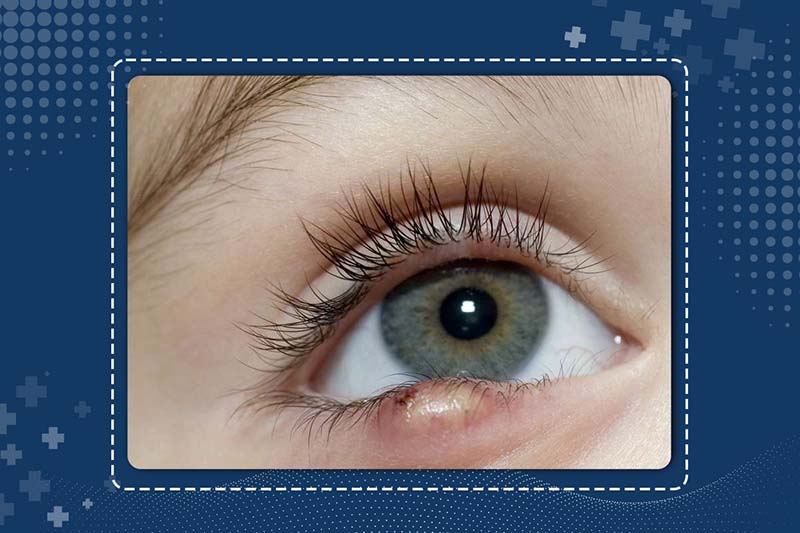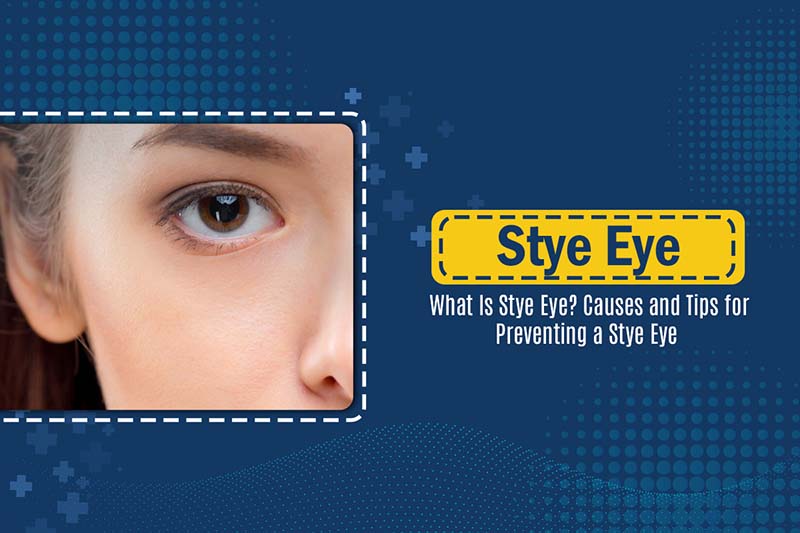Blog
What Is Stye Eye? Causes and Tips for Preventing a Stye Eye
If you one day see a pimple on your eyelid, you are probably having a stye eye. It may feel painful and annoying, and you may want nothing more than for it to go away. However, there are a few precautions you need to know first when dealing with a stye. Let’s explore what a stye is, as well as some home remedies to deal with a stye with Ozparks.com.au.
An Overview of Stye Eye
A stye eye, also known as a hordeolum, is a common yet uncomfortable eye condition characterized by a red, swollen lump that typically appears along the eyelid’s edge. This lump, which might resemble a boil or pimple, results from a bacterial infection and often contains pus. While styes can develop on the inner eyelid, they are more frequently found on the outer eyelid.
Understanding what causes a stye in the eye is crucial; the infection is often due to blocked oil glands. Recognizing the beginning stages of eye stye can help in early eye stye treatment.
Most styes are self-limiting and begin to resolve within a few days without the need for medical intervention. To alleviate the discomfort associated with a stye in the eye, one effective home remedy is the application of a warm compress. Gently pressing a clean, warm washcloth against the affected eyelid can help reduce swelling and promote drainage, easing pain in the process.
Although styes on the eye are prevalent and generally manageable with home treatments, some cases might necessitate professional care from an eye care specialist, especially if they persist or recur frequently. In such instances, consulting about eye drops for stye or stye eye drops might be beneficial. Additionally, severe cases may require more specific eye stye treatment
options.
Recognizing what is a stye in the eye and how to treat a stye on the eye can make managing this condition easier. Upper eyelid stye eye issues might sometimes be more persistent, requiring focused attention. Overall, understanding the eye stye causes and how to effectively use treatment for stye eye can significantly enhance recovery and comfort.

Causes of a Stye Eye
Bacteria, most commonly a type called staphylococcus, are the primary cause of most styes. Your body naturally hosts billions of friendly bacteria, which generally coexist without issues. However, when conditions become favourable for bacterial overgrowth, an infection can occur, leading to a stye in the eye.
Various factors can trigger an eye stye. Frequently touching or rubbing your eyes with hands that carry bacteria can introduce an infection. This is more likely during allergy season when your eyes may be itchier than usual. Using old makeup or not removing eye makeup before bed can also create conditions for an infection. These actions are common causes of an eye stye.
A stye forms when one of the oil glands in the eyelids becomes blocked, allowing bacteria to multiply inside the blocked gland. If the bacteria infect an inner eyelid gland, it results in an internal stye, which is a more severe type of stye in the eye. An infection in a gland within an eyelash follicle leads to an external stye. Understanding what causes a stye in the eye can help in the prevention and treatment of this condition.
In the beginning stages of an eye stye, you may notice redness, swelling, and tenderness around the eyelid. Knowing how to treat a stye on the eye early can prevent further discomfort. For those seeking eye stye treatment, it is recommended to keep the affected area clean and avoid touching or rubbing it. Eye drops for styes are often used to alleviate symptoms. For persistent cases, consulting a healthcare provider for treatment for a stye eye might be necessary.
Whether it’s an upper eyelid stye or a stye under the eye, early intervention can make a significant difference. The beginning stages of eye stye treatment are crucial to manage the symptoms effectively. If you’re wondering what is a stye in the eye and how to get rid of an eye stye, it’s important to address it with proper hygiene and suitable eye stye treatment options available at your local chemist.

Stages of Stye Eye
The development of a stye involves several stages:
- Initial Infection: You introduce bacteria to your eyelid by touching your eyes with unwashed hands.
- Formation of Lump: A painful, red, and tender lump forms on the eyelid.
- Growth and Pointing: The lump enlarges and may develop a white or yellow top, indicating a pustule or abscess, a stage known as ‘pointing.’ This point can be along the edge of the eyelid (where eyelashes grow) or inside the eyelid, but it is usually not on the outside of the eyelid.
- Irritation: The stye can irritate the eye, causing it to water and feel as if something, like an eyelash, is on the eye’s surface.
- Breaking or Healing: The surface over the stye may break, releasing the pustule, or the swelling may subside without bursting as the body’s immune system controls the infection.
- Resolution: If the pustule drains, the lump disappears quickly. If not, the swelling may persist longer, requiring a consultation with a doctor.
Tips for Preventing a Stye Eye
If you are prone to styes, adopting a few new habits can help prevent them from returning:
- Wash Your Hands Frequently: Hands carry dirt and germs that can infect or clog pores or hair follicles near your eye, causing a stye. Keep them clean with soap and warm water, or use an alcohol-based hand sanitizer.

- Avoid Touching Your Eyes: It can be tempting to rub your eyes when they are itchy, especially during allergy season. Try to resist and consider taking allergy medication to alleviate the itch.
- Remove Makeup at Night: Use a gentle, eye-safe cleanser to wash your face and eyelids before sleeping, as makeup can block pores and hair follicles.

- Keep Makeup Fresh: Discard products like eyeliner and mascara after 2 to 3 months, and never share your makeup with anyone.
- Manage Blepharitis: If you frequently experience inflamed eyelids, follow your doctor’s advice for managing the condition, which may include cleaning your eyelids daily.
What to Do If You Have a Stye Eye?
In the majority of instances, a stye does not necessitate specific medical treatment and does not impede clear vision. Typically, a stye will run its course within about a week, healing completely from the time it appears to when it resolves. However, more stubborn cases may persist for up to two weeks.
Although styes can be painful and uncomfortable, you must resist the urge to squeeze or pop them. Attempting to burst a stye not only fails to accelerate healing but can actually exacerbate the condition. Squeezing a stye can release bacteria, spreading the infection and potentially leading to more severe eye complications.
For initial treatment, consider the following home care strategies:
- Apply warm compresses to the affected eyelid several times a day. This can help the stye to drain naturally and relieve discomfort.
- Keep your eyelids clean and avoid wearing makeup or contact lenses until the stye has healed to prevent further irritation or spread of the infection.
Home Remedies for a Stye Eye?
The most effective and quickest way to alleviate a stye is through the use of warm compresses. Simply apply a warm, damp, and clean washcloth to your eyelid for 10-15 minutes, repeating the process 3-5 times daily. This method helps to soften and unclog the stye, encouraging it to drain naturally.

Beyond using warm water compresses, here are a couple of additional remedies you might consider:
- Green tea compresses: Soak green tea bags in warm water and place them over your eyes. Green tea contains natural antibacterial properties that may help break down the bacteria in the stye. While the effectiveness of green tea for styes is still debated among eye care professionals, using moist green tea bags is safe and likely to be at least as beneficial as warm water compresses alone.
- Eyelid cleaners: Commercially available eyelid cleaning pads can be used to gently cleanse the area. Alternatively, you can create a homemade solution by mixing half baby shampoo with half water, which can be effective in maintaining eyelid hygiene.
If the stye is particularly painful, taking paracetamol can provide some relief. In cases where the stye persists or if there are signs of a more serious infection, oral antibiotics might be necessary.
When to Consult a Doctor?
A stye typically resolves on its own. However, if it doesn’t improve with self-care, you should seek medical assistance. Consult your doctor if:
- Your eye is swollen shut.
- Pus or blood is leaking from the bump.
- Pain and/or swelling increases after the first two to three days.
- Blisters form on your eyelid.
- Your eyelids feel hot.
- Your vision changes.
Styes keep recurring. If this happens, your doctor may perform a biopsy (taking a small sample of the stye) under local anesthesia to rule out other more serious conditions.
Conclusion
In summary, a stye is caused by a bacterial infection. Avoid spreading the bacteria by refraining from popping the stye. It will typically resolve on its own, and you can alleviate the pain by applying a warm washcloth to your eyes. If the stye eye does not improve, contact your doctor immediately. To prevent recurrence, remember to wash your hands regularly and keep your eyes clean. For more tips and information on eye health, visit Ozparks.com.au.

